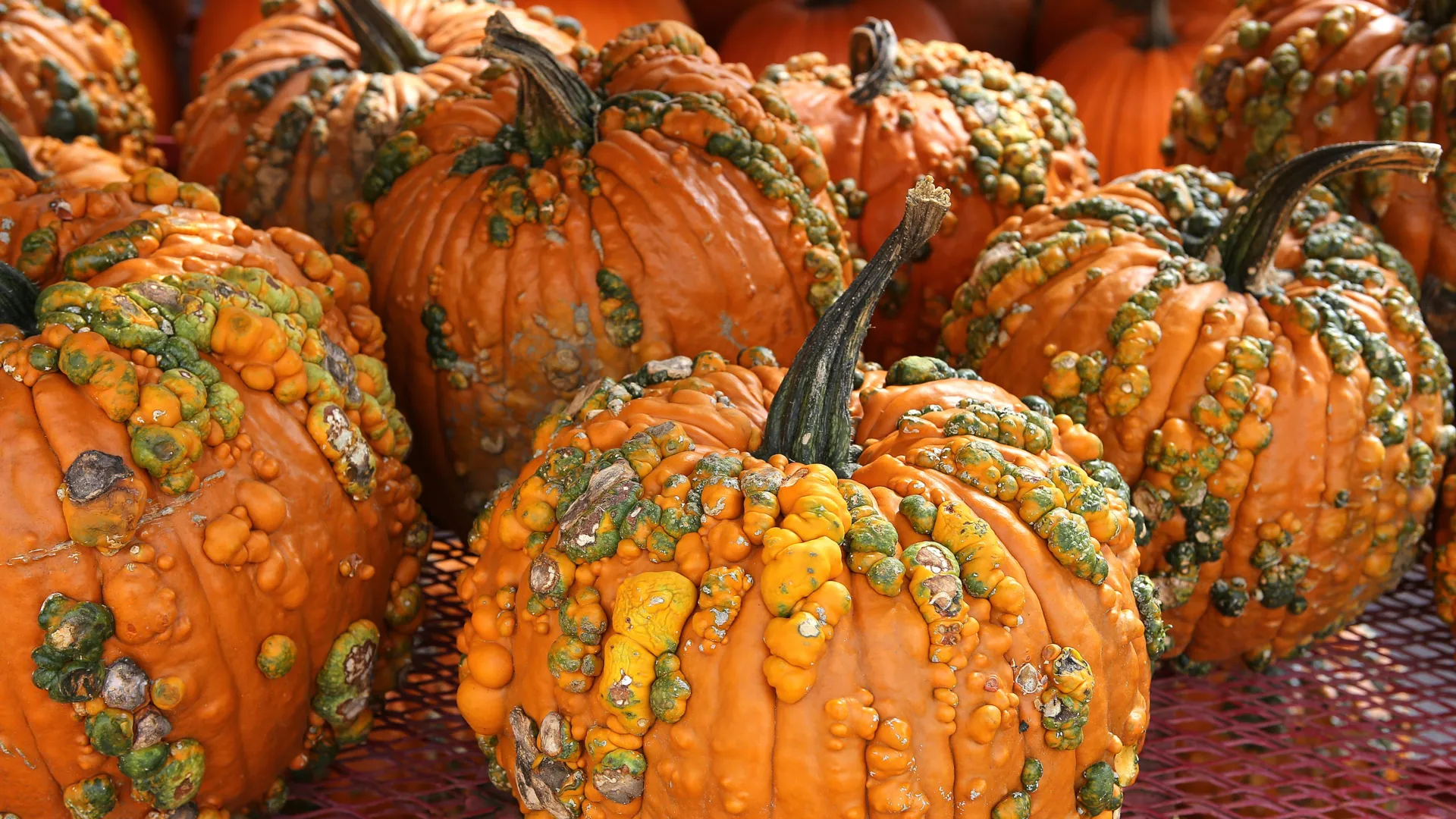Your pumpkin might be hiding a toxic secret
Kobe University scientists uncovered why pumpkins, squash, and other gourds absorb dangerous soil pollutants into their edible parts.
- Date:
- October 30, 2025
- Source:
- Kobe University
- Summary:
- Researchers in Japan have revealed how some gourds draw pollutants into their fruits. The secret lies in a protein that carries contaminants through the plant sap. By manipulating this protein’s structure, scientists hope to breed crops that resist contamination or serve as natural soil purifiers. This finding bridges food safety and environmental cleanup.
- Share:

Pumpkins, squash, zucchini, and other members of the gourd family have a surprising trait: they can take up pollutants from the soil and store them in their edible parts. Researchers at Kobe University have uncovered the biological reason behind this phenomenon, opening the door to growing vegetables that are safer to eat and potentially using plants to clean contaminated land.
The Mystery of Polluted Gourds
Plants in the gourd family, including pumpkins, melons, cucumbers, and zucchini, are known for accumulating high levels of pollutants in their fruit. Kobe University agricultural scientist INUI Hideyuki explains, "The pollutants don't easily break down and thus pose a health risk to people who eat the fruit. Interestingly, other plants don't do this and so I became interested in why this happens in this group specifically."
Earlier research from Inui and his team revealed that gourds contain a type of protein that binds to pollutants, allowing them to move through the plant's tissues. In a recent study, the scientists found that the shape of these proteins and how strongly they attach to pollutants determine how much contamination ends up in the aboveground parts of the plant.
"However, these proteins exist in many other plants, and even among the gourds, there are varieties that are more prone to accumulating pollutants than others. We then noticed that in the highly accumulating varieties, there are higher concentrations of the protein in the sap," says Inui. This led the team to investigate how these proteins are secreted into the plant's sap.
A Tiny Molecular Tag Makes the Difference
In their new paper published in Plant Physiology and Biochemistry, the Kobe University group reports that protein variants from high-accumulating plants are released into the sap, while other versions remain inside the cells. They found that a small variation in the protein's amino acid sequence serves as a "tag," instructing the cell on whether to keep the protein or send it out.
To test this, the researchers introduced the high-accumulation protein into unrelated tobacco plants. The modified tobacco plants also exported the protein into their sap, confirming the mechanism. "Only secreted proteins can migrate inside the plant and be transported to the aboveground parts. Therefore, this seems to be the distinguishing factor between low-pollution and high-pollution plant varieties," Inui explains.
Understanding how pollutants accumulate in food crops could lead to safer agriculture. "By controlling the behavior of contaminant-transporting proteins, through genetic modification of their pollutant-binding ability or its excretion into the plant sap, we believe it will be possible to cultivate safe crops that do not accumulate harmful chemicals in their edible parts," says Inui.
Using Plants to Clean Contaminated Land
Inui's vision extends beyond food safety. "I started this research because I was looking for plants that can detect and digest pollutants effectively. Therefore, I also envision that we could use the knowledge gained through this work for creating plants that are more effective in absorbing soil pollutants. This could turn into a technology for cleaning contaminated soils," he says.
This work was supported by the Japan Society for the Promotion of Science (grant 23241028) and the Murao Educational Foundation.
Journal Reference:
- Minami Yoshida, Mizuki Suwa, Daito Eto, Aya Iwabuchi, Ryouhei Yoshihara, Kenichi Ikeda, Hideyuki Inui. Extracellular secretion of major latex-like proteins related to the accumulation of the hydrophobic pollutants dieldrin and dioxins in Cucurbita pepo. Plant Physiology and Biochemistry, 2025; 229: 110612 DOI: 10.1016/j.plaphy.2025.110612
Cite This Page: